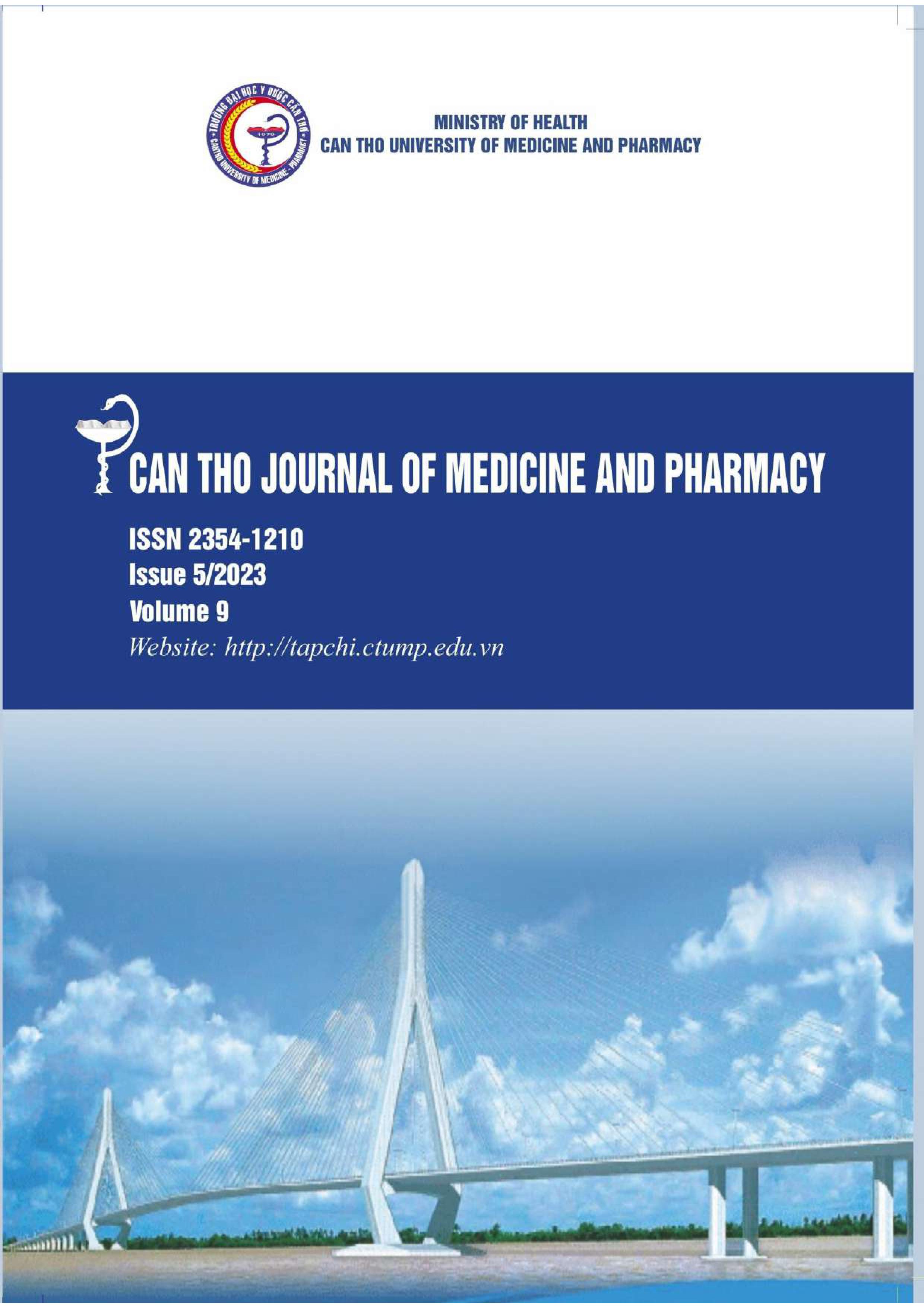CLINICAL CHARACTERISTICS, PARACLINICAL, AND TREATMENT RESULTS OF EOSINOPHILIC MENINGITIS IN CHILDREN: A CASE SERIES
Nội dung chính của bài viết
Tóm tắt
Background: Recognizing clinical and paraclinical reduce morbidity and mortality from this disease. Objective: To investigate the association of factors, clinical and paraclinical characteristics, and treatment outcomes of Eosinophilic meningitis. Materials and methods: Reports on a series of diseases detected with eosinophilic meningitis at the Department of Infectious Diseases at Can Tho Children's Hospital. Results: the cause of admission was usually intermittent headache, fever, and vomiting. Neurological symptoms include lethargy, and a stiff neck, no focal neurological damage was noted. White blood cells count in the peripheral blood slightly increased or normal; increased number of cerebrospinal fluid white blood cells; no larvae was found in the CSF; ELISA technique to find parasite antigens in blood detected all 3 cases positive for Toxocara spp. The drugs were treated include Ceftriaxone, Vancomycin, Imipenem, Albendazole, and Prednisolone. All cases got stable treatment results and hospital discharge after treatment Conclusion: Eosinophilic meningitis, although rare, can occur and it is easy to miss the diagnosis in the early stages. Treatment with anthelmintics and steroids can be effective.
Chi tiết bài viết
Từ khóa
eosinophilic meningitis, Toxocara spp
Tài liệu tham khảo
2. Federspiel F, Skovmand S, Skarphedinsson S (2020). “Eosinophilic meningitis due to Angiostrongylus cantonensis in Europe”. Int J Infect Dis IJID Off Publ Int Soc Infect Dis;93:28–39.
3. Ho Thi Hoai Thu, Truong Huu Khanh and Ho Dang Trung Nghia (2017). “Epidemiological and clinical characteristics in children with eosinophilic meningitis at the infection department of Children's Hospital I”, Ho Chi Minh City medical journal Chi Minh, Supplement, Volume 21, No. 2, p102 -107.
4. Hwang KP, Chen ER, chen TS (2014). “Eosinophilic meningitis and meningoencephalitis in children”, Southeast Asian J Trop Med Public Health, Vol 35 (1), p.172-174
5. Kittisak S, et al. (2013). “Clinical Manifestations of Eosinophilic Meningitis Due to Infection with Angiostrongylus cantonensis in Children”. Korean J Parasitol, Vol 51 (6), p. 735-773.
6. Khamsai S, Chindaprasirt J, Chotmongkol V, et al (2020). “Clinical features of eosinophilic meningitis caused by angiostrongylus cantonensis in Thailand: A systematic review. AsiaPac J Sci Technol;25:1–6
7. Pham Nhat An (2002). “Some comments on eosinophilic meningitis in children seen at the National Children's Hospital from 1996 to the end of 2000”, Practical Medicine, volume 3, p.66 - 69.


